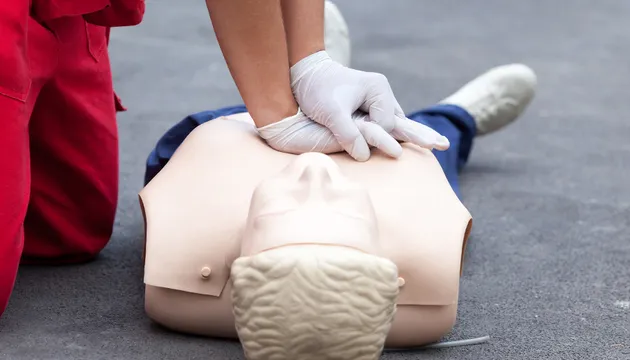Unveiling the Lifesaving Legacy: CPR and First Aid’s History and Impact on Health

A few seconds might be the difference between life and death in situations concerning health. Cardiopulmonary Resuscitation (CPR) and first aid are widely acknowledged as two essential medical measures that significantly improve the chances of survival in life-threatening circumstances. The extensive background, substantial advancements, and global impact of CPR and first aid on public health are all covered in this article.
The Emergence of CPR
The beginnings of CPR may be traced to ancient societies, which used chest compressions and various artificial breathing methods. In the middle of the 20th century, CPR as we know it today emerged. The “mouth-to-mouth” technique was created in the 1950s by Drs. James Elam and Peter Safar, two surgeons from Austria. This method involves giving a sufferer in need rescue breaths, thus giving them new life.
Later, in the 1960s, the American Heart Association (AHA) promoted the practice of “closed-chest cardiac massage,” which promoted chest compressions as a crucial part of CPR. This approach allowed a larger audience to use it by eliminating the requirement for rescue breaths and streamlining the procedure.
First Aid’s Evolution
First Aid, as a concept, has been practiced throughout human history in various forms.
In 1903, the International Red Cross and Red Crescent Movement adopted standardized first aid guidelines, further advancing the global spread of first aid knowledge.
CPR and First Aid Today
People from many areas of life may now easily obtain CPR and First Aid training. Organizations like the American Heart Association, the Red Cross, and numerous healthcare institutes provide courses. Participants learn how to spot situations, including cardiac arrest, choking, and injuries, and how to react to them in these classes.
The significance of CPR and First Aid to public health cannot be overstated. CPR can boost a victim’s chance of surviving a cardiac arrest by a ratio of two to three when administered promptly and efficiently. There are estimated to be more than 350,000 cardiac arrests outside of hospitals per year in the US alone.
The knowledge of CPR can empower bystanders to intervene until professional medical help arrives.
Similarly, First Aid skills are invaluable in various emergencies, from car accidents to natural disasters. Basic medical treatment can save lives and stop injuries from getting worse. Quick actions, such as stopping the bleeding, immobilizing fractures, and doing the Heimlich maneuver, can significantly alter how an emergency turns out.
Conclusion
The development of CPR and First Aid throughout history is evidence of human creativity and dedication to lifesaving. These life-saving abilities have developed from ancient traditions to contemporary ways to become indispensable instruments in the hands of regular people. Anyone who could find themselves in a position to assist during an emergency might benefit from CPR and First Aid training in addition to healthcare professionals.
CPR and First Aid remain at the forefront of healthcare as we continue to make strides in our understanding of medical science and technology, ensuring everyone has access to the most fundamental and vital interventions. Their history of lifesaving is a testament to human compassion and the everlasting dedication to protecting life in the face of difficulty.




